#disc florets
Text
“Disc florets”
Disc florets
Within the one, many. /
Disc florets bloom and then seed. /
New sunflowers loom.
.
.
#disc_florets #bloom #sunflower #seed #poem #poetry #haiku #photo #davidebooker #oldnorthknoxville #july #sunday #071022 #2022
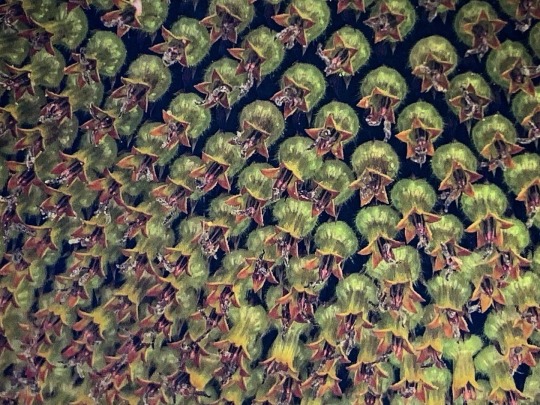
View On WordPress
#071022#David E. Booker#disc florets#haiku#July#Old North Knoxville#photo#poem#poetry#seeds#sunflowers
0 notes
Text
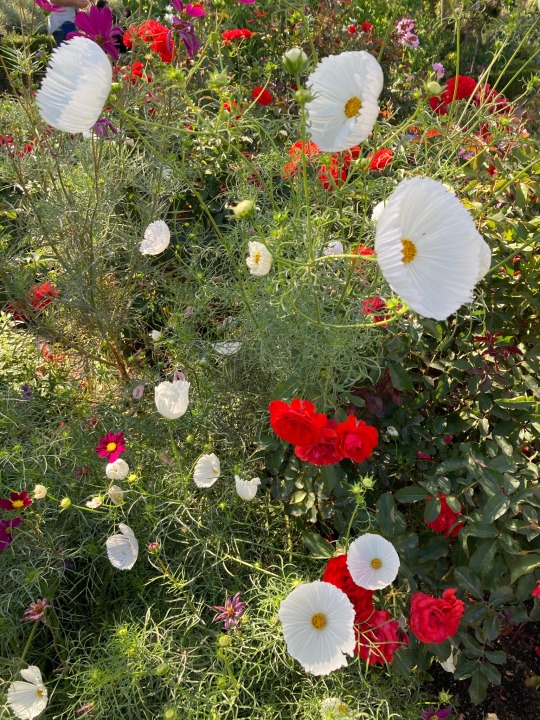

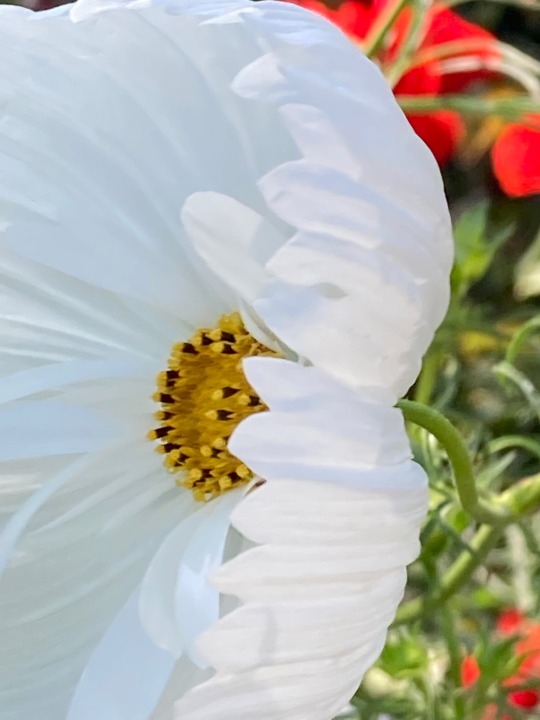

1 note
·
View note
Text

Chrysanthemum flowers have central tubular disc florets surrounded by layers of beautiful ray florets, which together create their distinctive appearance. They are native to East Asia, particularly China, where they are considered a symbol of nobility and purity. In Japan, they are a symbol of longevity, happiness, and the imperial family.
In Chinese traditional medicine, the chrysanthemum was used to make teas and remedies believed to have cooling properties that can alleviate ailments related to heat, such as fever, sore throat, and eye irritation. They are a source of antioxidants and have been studied for their potential anti-inflammatory and antibacterial effects.
Chrysanthemums, provide nectar and pollen for pollinators, such as bees and butterflies, which, in turn, help in the pollination of other plants. In terms of cultivation, chrysanthemums are relatively easy to grow and adapt to various climates and soil types. Their popularity in gardens and floral arrangements has led to the development of numerous cultivars with different characteristics, making chrysanthemums a versatile and colourful addition to gardens worldwide.
127 notes
·
View notes
Text

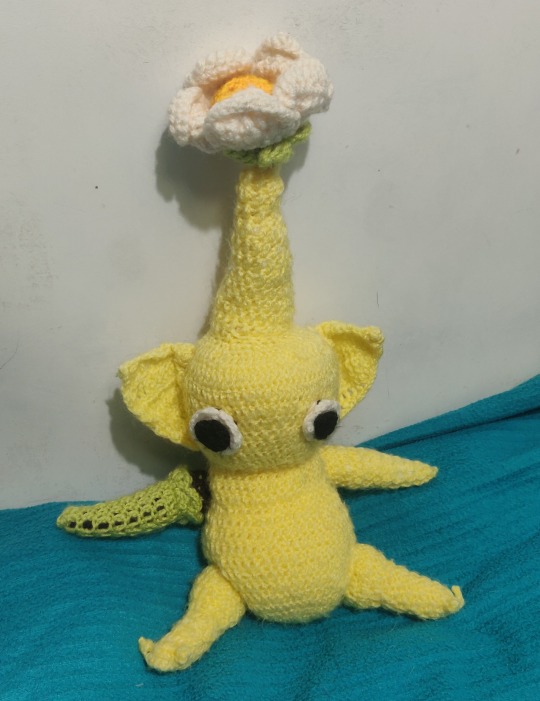
Hello everyone! I would like you to meet the little guy I have been working on for the past week :)
His name is Mareczek, Blade of Olimar (A.K.A Marek), and as you can see, he is a Yellow Pikmin.
He is pale because I created him in a fit of creative malaise and hellsite-related frustration, and was too impatient to wait before I could get the right shade of yellow yarn. I ran out, and that's why he has this sick graft-arm instead.
I like to think he lost it valiantly in battle, narrowly escaping the jaws of death. "Rendered Unto Mars" indeed 💖
More details beneath the cut~



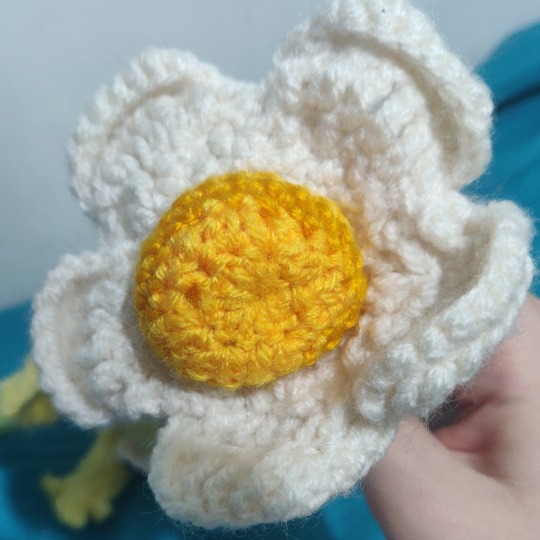
I did the flower by hacking a coaster-tutorial the very talented Mhalee's Crochet put up on Youtube, doing a row of triple-crochets over each of the petals-- It was so, so very janky. I filled the in the gaps by the edge in tying up the ends; the sewing is what gives it its shape and I'm honestly surprised it looks this good.
I made the floret-disc separately. Also! If you look closely in the main pictures, you'll spot the calyx :) I made using the Summer Flox flower by Pora Pora Crochet on Youtube. She has so many lovely tutorials, it's insane.

Little test flower, with my lovely cat for reference. Ended up being wayyy too small for Marek himself(thus the coaster-hacking), but it's be perfect for smaller Pikmin.
Also, as one final note:

I have this to thank for spurring me into action. Marek did end up needing a wash at one point(alas, it is why he is so baggy), so this meme has well and truly been fulfilled.
I hope you're happy, 4chan Anon. Marek has you to thank for his existence.
#scrawny rambles#scrawny crafts#scrawny crochets#adventures in crochet#pikmin#yellow pikmin#also he does have toes#they just keep curling uphfjgsk#I WANTED TO GIVE HIM FINGERS TOO but no more yarn :( the pale yellow yarn i got afterwards was TOO pale goddammit!!!#if i end up finding the right shade i will give him some#along with cool thorn-claws for his other arm >:}#don't hold your breath but i am currently making one of his two girlfriends. she's ended up small tho.#the size he was originally meant to be before i miscalculated lmaooo#so like. i'll put that down to speciation and/or sprouting conditionsjhghkfjkd#'YES i have two girlfriends and they ARE both weed'#pickminne throuple...#idk i'll see if i make this particular one her or if i'll do her properly later. and this small one can be her sister or some shithgjkgfjd#this is beside the point#that being that i love marek he brings me immense joy and newfound confidence in my crochet abilities#thank you to everyone who followed along with my sporadic server-posts!!!#you guys are 💖💖💖 the best#k i think i've rambled enough#also thanks to scruffy on yt for kickstarting my interest in the first place holy shit i love these guys wow !!!
24 notes
·
View notes
Text
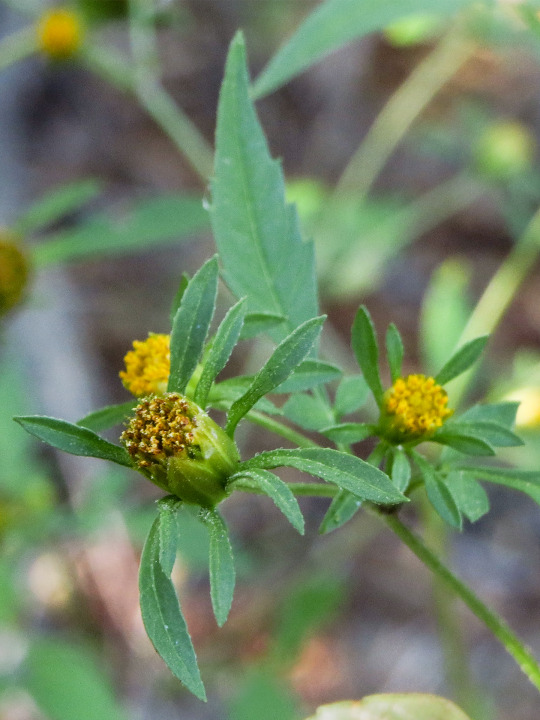
Scientific Name: Bidens frondosa
Common Name(s): Devil’s beggarticks
Family: Asteraceae (aster)
Life Cycle: Annual
Leaf Retention: N/A
Habit: Forb
USDA L48 Native Status: Native
Location: Plano, Texas
Season(s): Fall
In the Asteraceae family, a flower head is typically made up of disc florets in the center surrounded by ray florets outside. To the casual observer, this arrangement will appear as a single flower, with the rays (technically ligules) being the petals. Many B. frondosa flower heads, however, lack rays altogether, and others will have a few short ones at most. Instead of ray florets, the disc florets are surrounded by green bracts (which aren’t petals either). In this photo, the two flowers in the background may look like buds with unopened petals, but they’re actually disc florets already in bloom. With the flower in the foreground, we no longer see the yellow corolla of the disc florets because it has already been pollinated and is starting to form the seeds.
#Bidens frondosa#devil's beggarticks#Asteraceae#annual#forb#native#Plano#Texas#fall#autumn#flower#yellow#plantblr#Halloween
4 notes
·
View notes
Note
drop this sunflower🌻into the inboxes of the blogs that make you happy! lets spread a little sunshine ☀️
------
I had to officially reciprocate because I wanted to thank you for all the fics you write 😊
And now, infodump on three fun facts about sunflowers I found on the internet to honor the spirit of Professor Gale Dekarios:
THEY HAVE TRAVELED TO SPACE. In 2012, U.S. astronaut Don Pettit brought along a few companions to the International Space Station: sunflower seeds. Pettit regularly blogged about his budding friendship and shared photos of the gardening process.
THEY ARE ACTUALLY THOUSANDS OF TINY FLOWERS. Each sunflower’s head is made of smaller flowers. The petals we see around the outside are called ray florets, and they cannot reproduce. But the disc florets in the middle, where the seeds develop, have both male and female sex organs, and each produce a seed. They can self-pollinate or take pollen blown by the wind or transported by insects.
THEY CAN BE USED AS SCRUBBING PADS. Once the flower heads are empty of seeds, they can be converted into disposable scrubbing pads for jobs too tough for your cleaning tool.
🫶 thank you so much for sharing these facts!!! I had no idea!!! Professor Gale would be very proud and would probably go away and find more fun facts to share.
2 notes
·
View notes
Text

"a white-haired bee slurps on a disc floret of a sunflower"-on 08/08/2023 (as in ronaldo's bday)
6 notes
·
View notes
Text

Every year she tells herself she won’t get morbid; won’t even think about it. But every year, she does. The last couple of hours were spent carefully not googling his name, or checking Facebook to see if his family were posting memorial things. Eventually Imogen tucked her phone under her pillow and ventured out into the Sanctum’s grounds to try and get out of her head. There’s just one word that keeps buzzing around her thoughts: murderer.
Nine years to the day. And Imogen feels just as sick and anxious as she had on the day that it happened. Night has already fallen, the shimmering twilit haze of the Sanctum a rich velvety purple, and the bees are sleepy. The hives buzz lethargically, and Imogen emits her own low buzz in tandem, almost like a purr, her finger rhythmically and gently petting the soft fur of a bee that dozes in her palm. She’s trying really hard to keep her breath calm, but every now and then it hitches; when that happens, she joins the hive mind and loses herself to dreams of flowers and honey. But then her breath hitches not in grief, but surprise, as at her feet a strange, nacreous flower unfurls from the grass. Several shifting disc florets form a centre rich with pollen, dancing like a shimmering rainbow through glass, and the bee in Imogen’s hand is roused, bumbling down to investigate this exciting emergence. “Starcaller?” She sits up a little straighter, glancing around. Strange flowers manifesting generally mean one thing. @starcvller
4 notes
·
View notes
Text
Six Reasons to Plant Sunflowers
I just planted sunflowers seeds in a six-pack for later transplant to the garden. Last year I grew them next to my zucchini plants with good success.
My thought was to attract bees to the sunflowers and the nearby zucchini flowers for pollination. They were gorgeous together. (Sunflower ‘Junior’ from Renee’s Garden, linked below).
The following text for Six Reasons To Plant Sunflowers is from the Home Garden Seed Association. The photos are from my garden.
Sunflowers are colorful. They are joyful! And due to the many commercial uses of sunflowers—cooking oil, cut flowers, and birdseed are three— they have been the focus of much breeding work. No matter where or how you garden, there is a sunflower for you.
1. To Attract Birds
If it’s birds you’re after, plant multi-flowering, branching sunflowers. Birds devour any and all varieties of sunflower seeds. Particularly valuable for most winter birds are oil-rich black oil sunflowers. The seeds are thinner shelled, and easy for seed-eating birds to crack open.
(edible gardens52) A few years ago I grew very tall sunflowers in the vegetable garden. Warm fall days came and the seeds ripened to perfection for the birds. I was off to work one day and came home in the late afternoon to this. I missed the feast but wonder who was in attendance.
2. For the Table
We associate sunflowers with vitality and happiness— a bouquet of sunflowers brings these good feelings indoors. Cut the stems at a 45° angle and strip all but the top leaves. Pollenless sunflowers will not drop pollen all over your tablecloth, and they’ll last up to two weeks in a vase. Bees will visit these male-sterile flowers, as they still produce nectar. If you choose to grow single stem varieties, you can space them tightly to produce smaller blooms, or a foot apart for larger flowers.
3. For Pollinators
All sunflowers attract a great variety of pollinators, mostly bees. For a long season of pollinator abundance, choose branching rebloomers. The best choices for pollinators are those with fully exposed disc florets—the hundreds (or even thousands!) of tiny center blooms that develop into seeds.
4. For Architecture and Garden Interest
There’s no doubt about it, by late summer, sunflowers are showstoppers. For fantastic garden focal points, choose tall—but not so tall that they’ll crash without staking— sunflowers in a variety of shapes and shades. There are many to choose from: big, fluffy ‘Honey Bear’, award-winning ‘Valentine’, deep, rich ‘Chocolate Cherry’. For garden adventure, look for a seed packet that contains several varieties of sunflowers. Shorter, more reachable varieties, such as fully double ‘Teddy Bear’, are ideal for children’s gardens.
5. For Containers
If your garden space is limited, look for sunflowers bred for containers. ‘Sunray Yellow Hybrid’ (pictured) branches out to produce up to 14 smallish blooms, and tops out at less than 2 feet. ‘Music Box’ has bicolor blooms with chocolate centers, and grows to about 21⁄2 feet.
(Seeds pictured below are from Renee’s Garden.
6. For Good Eating
To roast sunflower seeds, spread them evenly on a shallow pan and bake them at 300° until they are golden brown, stirring occasionally. Varieties with large, heavy flowerheads, such as ‘Sunzilla’, ‘Mammoth Grey Stripe’, or ‘Titan’, are the best choices for edible seeds. Another edible option: Sunflower microgreens are delicious and easy to grow. To speed the growing process, soak sunflower seeds in a jar of water until roots start to appear, changing the water every 8 to 12 hours. Sprinkle them close together on a soilless medium and top lightly with the medium. Harvest the greens at about 4 inches tall.
3 notes
·
View notes
Text
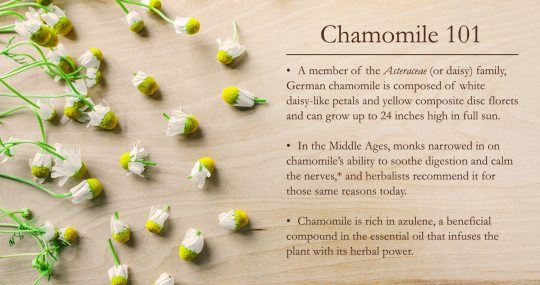
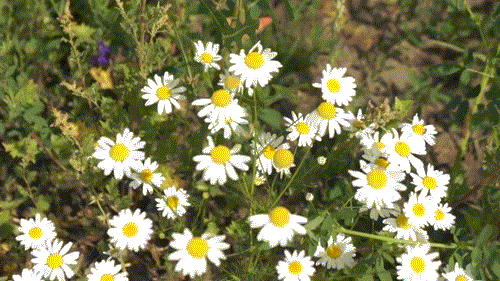
Like a humble daisy, the tiny chamomile flower doesn’t claim much spotlight, but its impact on herbal medicine and folklore is undeniable and enduring. For many people, a simple chamomile tea may be their first introduction to herbalism, used in many households to promote everything from relaxation to healthy digestion.* And with good reason: chamomile is rich in azulene, a beneficial compound in the essential oil that has worked its herbal magic throughout history for a variety of uses. Despite its seemingly humble demeanor, it is one of the most trusted plants in herbalism today. We feature it in several of our teas but showcase it center stage in our Chamomile tea and our Chamomile with Lavender tea.
There are several species of chamomile, but at Traditional Medicinals (TM), we use German chamomile (Matricaria recutita). A member of the Asteraceae (or daisy) family, German chamomile is composed of white daisy-like petals and yellow composite disc florets. Found in populated areas and temperate climates, it can stand up to 24 inches high in full sun. We source some of our favorite chamomile from the sunny fields of Poland and from fertile, Fair Trade-Certified™ farms of Egypt’s Nile River Valley. Here, harvesters gather the plant with large metal combs, designed to pick the flowers alone, thereby isolating the most medicinal source of the plant from the leaves and stems. TM is one of the rare tea companies to only use the chamomile flower itself, which gives our tea an especially fragrant, honeyed apple character and helps us reach higher levels of azulene to achieve the pharmacopoeial-grade herbs we seek.
In fact, chamomile’s appley aromatics first gave the herb its common name, derived from the original Greek chamaimēlon, or “earth-apple.” Ancient cultures were the first to sing the herb’s praises. The ancient Greek physician Dioscorides and naturalist Pliny the Elder prescribed it, Egyptian women mixed it with crushed rose petals to apply to their skin, and before modern preservation techniques were available, cooks soaked rancid meat in chamomile to mask unpleasant odors. In the Middle Ages, when hygiene was particularly difficult, people scattered chamomile on floors to help repel vermin and pests and to serve as a natural deodorizer. For hundreds of years, farmers have planted chamomile as a cover crop to attract beneficial insects and repel the pesky ones. As resilient to being stepped on inside as it is in meadows, chamomile has rightfully earned a reputation as a hardy and humble flower.
These folkloric uses undoubtedly stem from the plant’s soothing and calming properties. Throughout history, herbalists and physicians used chamomile for a variety of reasons. The ancient Greeks used it to help address the female reproductive system, the Egyptians used it to mummify bodies, and the Anglo-Saxons considered it one of their nine sacred herbs. By the Middle Ages, monks narrowed in on chamomile’s ability to soothe digestion and calm the nerves,* and herbalists recommend it for those same reasons today. Given chamomile’s popular application for bedtime and relaxation, don’t be surprised if you see beauty experts championing the use of chamomile tea bag compresses to soothe puffy eyes, as well.With such a wide variety of applications throughout such a wide span of history, it isn’t surprising that chamomile has earned its reputation as a household herb. But sometimes the humble is often taken for granted. The next time you seek a sip of chamomile tea or find it growing in a field, remember to give this tiny yet mighty plant the thanks it deserves.
https://www.traditionalmedicinals.com/articles/plants/chamomile-101/
4 notes
·
View notes
Text
“Disc florets”
Disc florets
Within the one, many. /
Disc florets bloom and then seed. /
New sunflowers loom.
.
.
#disc_florets #bloom #sunflower #seed #poem #poetry #haiku #photo #davidebooker #oldnorthknoxville #july #sunday #071022 #2022
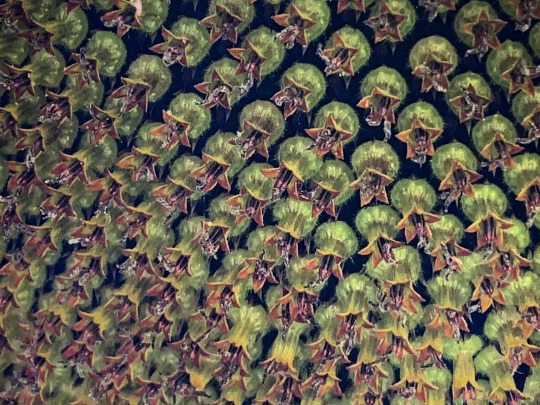
View On WordPress
#071022#bloom#David E. Booker#disc florets#haiku#July#Old North Knoxville#photo#poem#poetry#seed#Sunday#sunflower
0 notes
Text
This lovely large composite is Silphium terebinthinaceum, an aster in the tribe Heliantheae and a close relative of sunflowers. 🌻 This midwestern species occurs in dry, rocky-sandy areas, prairies, and occasionally in open mountainous meadows. The leaves are enormous and very hairy!
A key ID characteristic of this genus is that the disc florets are sterile and only the rays produce viable seed. With most other Heliantheae members, the opposite is true!
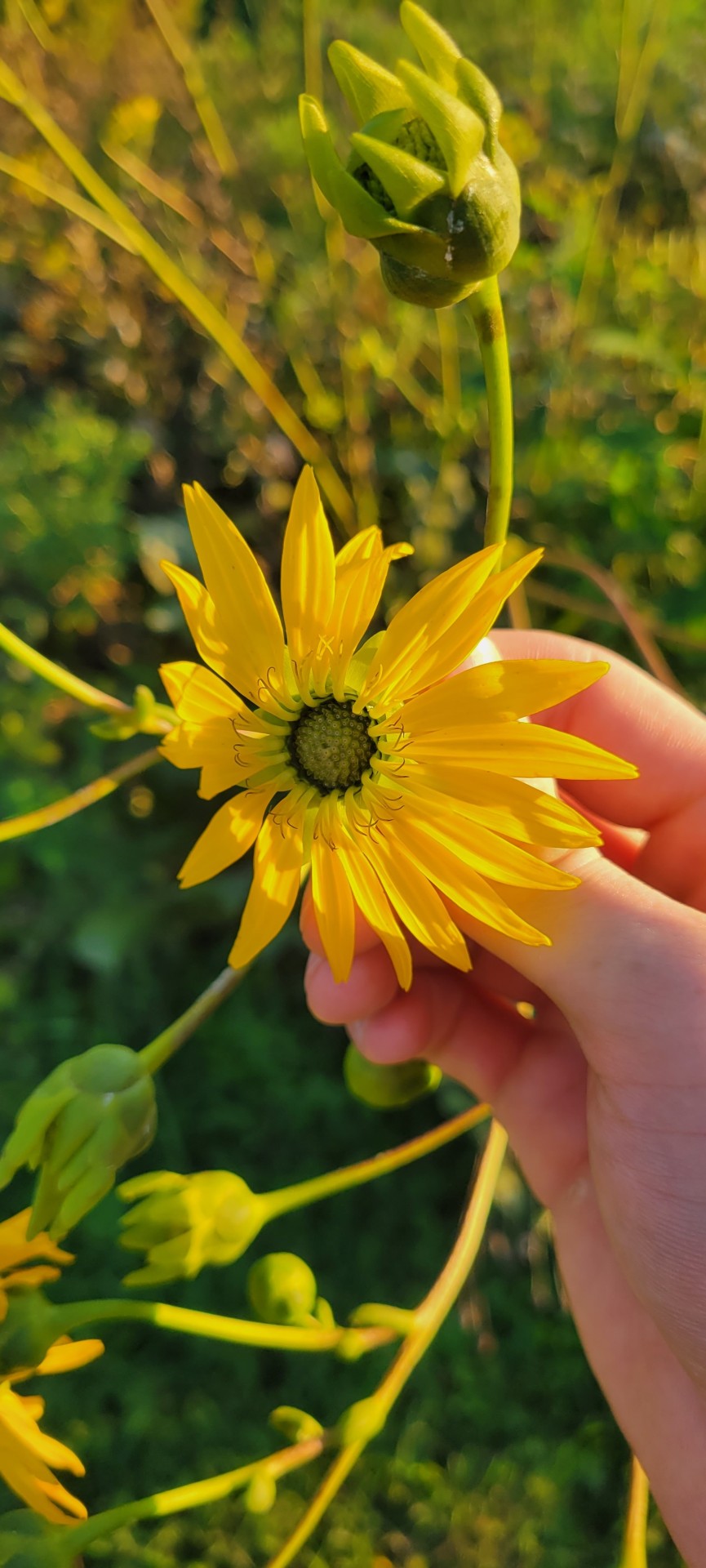
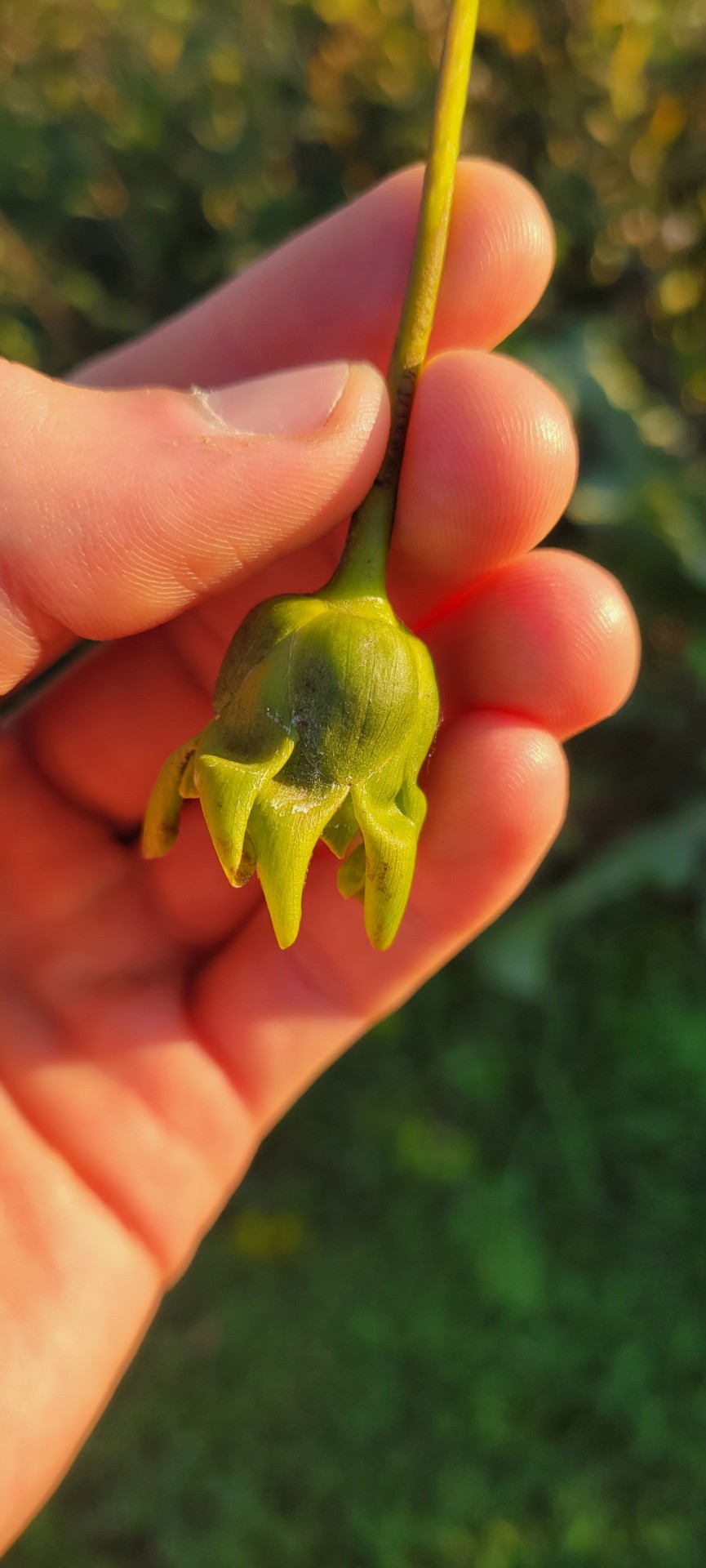


Silphium terebinthinaceum seen planted in a riparian area in in Lexington, Kentucky.
#plantblr#botany#asteraceae#aster#silphium#kentucky#kentucky plants#house plant#plants#foraging#floral#flores
2 notes
·
View notes
Text
Batch 4/5 Blog 4 Pt.2
Plant collection
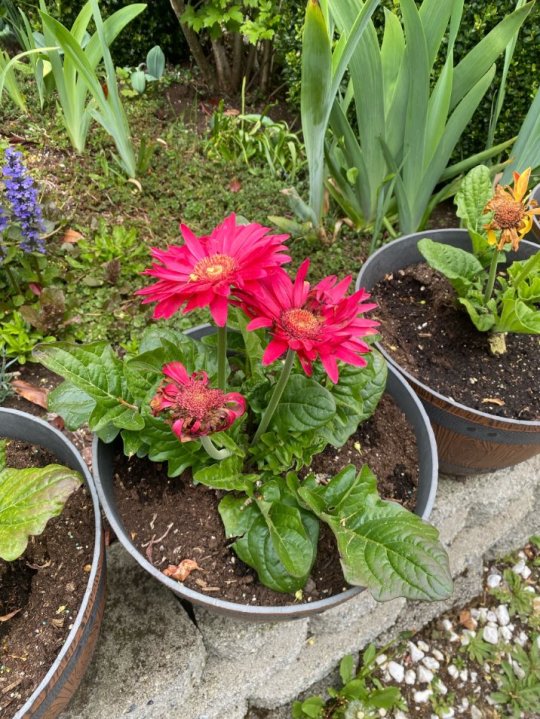
Barberton Daisy
Dicot
Class: Magnoliopsida
Order: Asterales
Family: Asteraceae
Genus: Gerbera
Species: Gerbera jamesonii
Traits of the Genus
Herbaceous Perennial
Leaves are Alternate
Leaf shape: Simple Ovate
Inflorescence shape: Head
Floral Formula (for one floret): K(5) C(5) A(∞) G(2)
(For one floret) Sepals(5), petals(5), stamens(2), and carpels(2). There are two carpels fused. The base of the petals and sepals is fused, and the position of the ovary is inferior (below the attachments of other floral parts of the plant)
The plant produces Achene fruit.
The most distinctive trait that helped me identify the plant's family (Asteraceae) is the structure and appearance of its head inflorescence, which makes the plant look like it has one flower.
The most distinctive traits that would help me identify the genus (Gerbera) of the plant would be the appearance of its red ray florets radiating out of the disc floret.
Bees, Butterflies, moths, and beetles typically pollinate this plant.
It is native to South Africa, particularly in the regions of Transvaal and KwaZulu-Natal.
0 notes
Text
Beautiful Red Dalia Flower
As a member of the Asteraceae, the dahlia has a flower head that is actually a composite (hence the older name Compositae) with both central disc florets and surrounding ray florets. Each floret is a flower in its own right, but is often incorrectly described as a petal. The modern name Asteraceae refers to the appearance of a star with surrounding rays.

1 note
·
View note
Text
Food Court Omelet
Via Tenderheart.
Omelet
6 large eggs
1 tsp sea salt
1/8 tsp white pepper
1 head of broccoli (about 12 oz/350 g), cut into small florets, stem peeled and cut into discs a scant 1/4 inch (5 mm) thick
1 yellow onion, finely diced
4 green onions, sliced
1 garlic clove, finely chopped
2-3 tbsp neutral oil
white or brown rice, to serve
Gravy
1 tbsp cornstarch
2 tbsp soy sauce or honey
1…

View On WordPress
0 notes
Text
Aster: The Star of the Garden
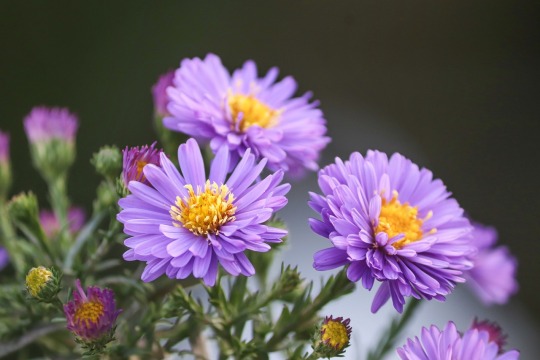
Asters, with their delicate and vibrant blossoms, are like stars in the garden. These dainty yet robust flowers belong to the Asteraceae family, and they have been cherished by gardeners and nature enthusiasts for centuries. Asters are renowned for their charming appearance, diverse colors, and their role as a late-season source of nectar for pollinators. Let's delve into the world of asters and explore the beauty and significance of these star-like blooms.
Appearance and Varieties: Asters are often characterized by their daisy-like flower heads, which consist of a central disc of tubular florets surrounded by ray florets that resemble petals. The range of colors is astonishing, from classic white and various shades of pink and purple to vibrant reds and blues. These stunning blooms come in various shapes and sizes, making them suitable for all types of gardens, from formal flower beds to wildflower meadows.
There are many aster species, but some of the most popular varieties include the New England Aster (Symphyotrichum novae-angliae), the Michaelmas Daisy (Aster amellus), and the New York Aster (Symphyotrichum novi-belgii). Each variety offers a unique beauty and character, providing gardeners with an array of options to choose from.
Cultural Significance: Asters hold cultural significance in various parts of the world. In ancient Greek, the name "aster" means star, which alludes to the shape of the flower head. The Greeks believed that asters were created from stardust when Virgo, the virgin goddess, wept, which is why they are often associated with purity and elegance.
In Victorian flower language, asters symbolize patience, daintiness, and remembrance. They were frequently used to convey messages of love, both romantic and platonic. In many cultures, asters are also associated with healing properties, and their leaves were used in traditional herbal remedies.
Ecological Importance: Asters play a vital role in supporting pollinators, particularly during the late summer and early autumn when many other nectar sources are scarce. Bees, butterflies, and other insects are drawn to the abundant nectar of asters, making them an essential part of the ecosystem. Gardeners often include asters in their designs to help maintain biodiversity and support declining pollinator populations.
Cultivation: Asters are relatively easy to grow and maintain. They prefer well-drained soil and full sun, although some varieties can tolerate partial shade. These hardy perennials thrive in many climates and are known for their resilience. Depending on the variety, they can grow to varying heights, from compact mounds to tall, stately plants. Regular deadheading (removing spent blooms) can prolong the flowering season and encourage more blooms.
Asters can be an excellent addition to any garden, whether you are looking to create a colorful late-season display or provide a haven for pollinators.
In summary, asters are like the stars of the garden, captivating us with their star-like blossoms and diverse array of colors. They hold historical and cultural significance while also playing a crucial role in supporting biodiversity. Asters are a testament to the enduring allure of nature, reminding us that even the most delicate of flowers can shine brightly in the tapestry of the natural world.
0 notes